Laser cut clear acrylic panels and 3D printed parts come together in this project to cover each other’s weaknesses. We'll get the best of both worlds without the need of tricky printing settings or super precise modelling.
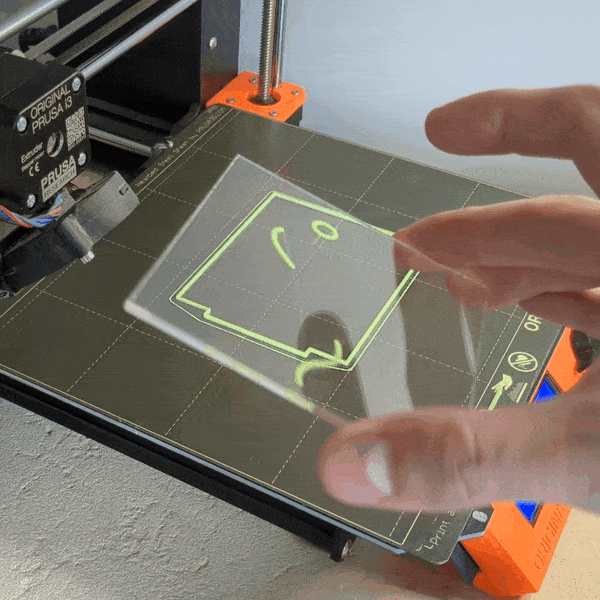
For the puzzle prop above (for my escape room) I needed a very durable and visible design on top of perfect transparency. 3D printing wouldn't work as I couldn't get reasonable transparency (readable text underneath) and laser engraved clear acrylic would just not be visible enough. The good news is that I don't have to pick one or the other. Porque no los dos?
So I laid down a laser cut acrylic panel on my 3D printer's bed, designed the part and melted some PLA on top of that acrylic. (dramatized for entertainment purposes)
Tbh, I'm intrigued that combining the two is not a common thing by now, because they just are perfect matches. The bond between the 3 materials is at least as strong as the regular layer adhesion, because the hotend will also melt the acrylic under the first layer. It's over 1 year now since I introduced that puzzle prop under escape room use and the bond looks like day-1.
Modeling
First of all I sketched the acrylic panel that I had laser cut beforehand. This basically means extruding the shape that was used for laser cutting up to the thickness of the panel (2mm in my case). Next I took an offset of 0.2mm on each side, which really was a bit loose. Here you can either measure the real size of the panel or you can factor in the laser kerf size (the width of plastic that's melted by the laser beam) and your 3D printer + filament tolerances. But we'll have to put the panel in without unsticking the print from the bed, so better to fit loosely than to not fit.
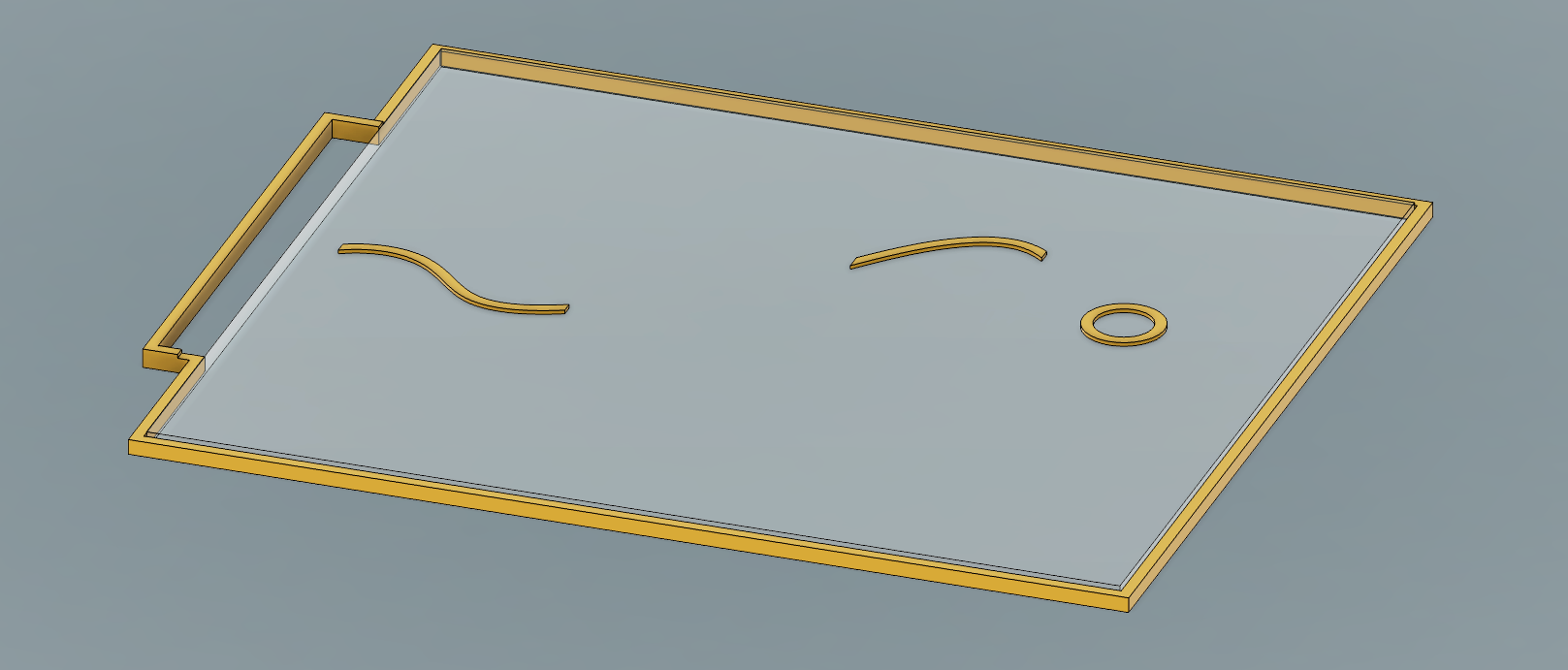
On this offset I built a fence of 2x nozzle size thickness (to get 2 perimeters) and made it go a bit more to the outside in one side. This outer part also rises above the rest of the fence for 1-2 layers to total the height of the acrylic panel. To exemplify, I'll print 0.2mm layers so 1.6mm the general height of the fence + 0.4mm for the protruded part to sum up to 2mm.
The reason for this is to wipe and prime the nozzle before moving to the useful bit, but after placing the panel, which is also why we go farther away, since we print under the Z-level of the panel.
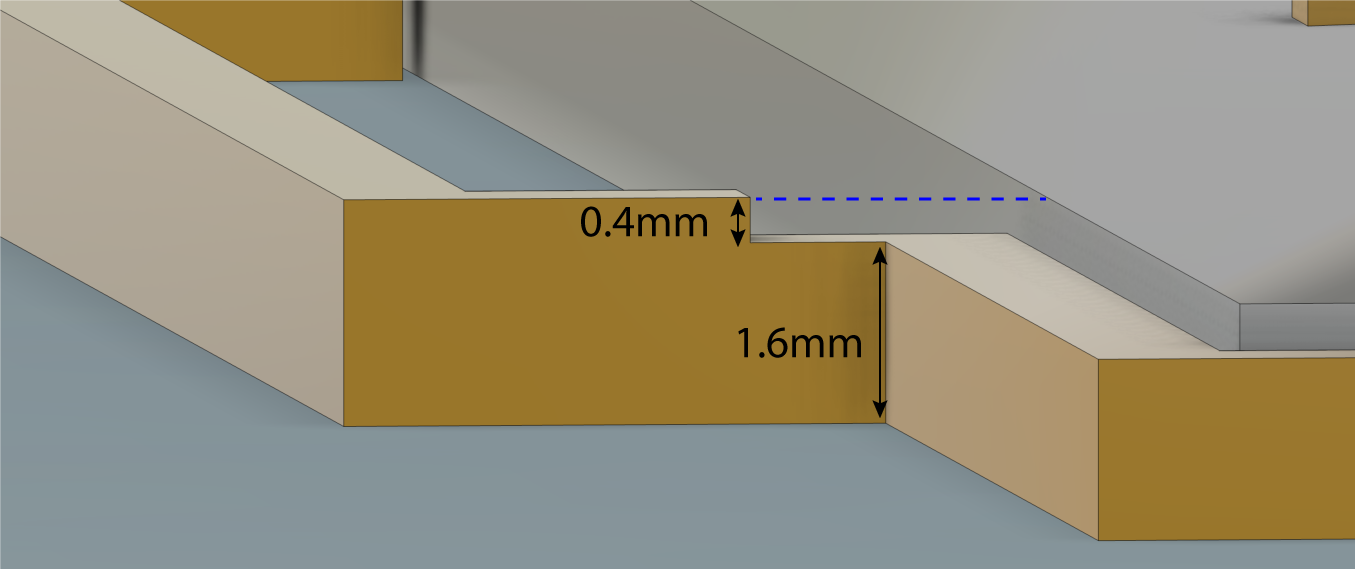
So now we're right at the panel height and can start using it as "support". The useful piece that we actually want to fuse over the acrylic panel sits in the slicer in mid air just above this level.
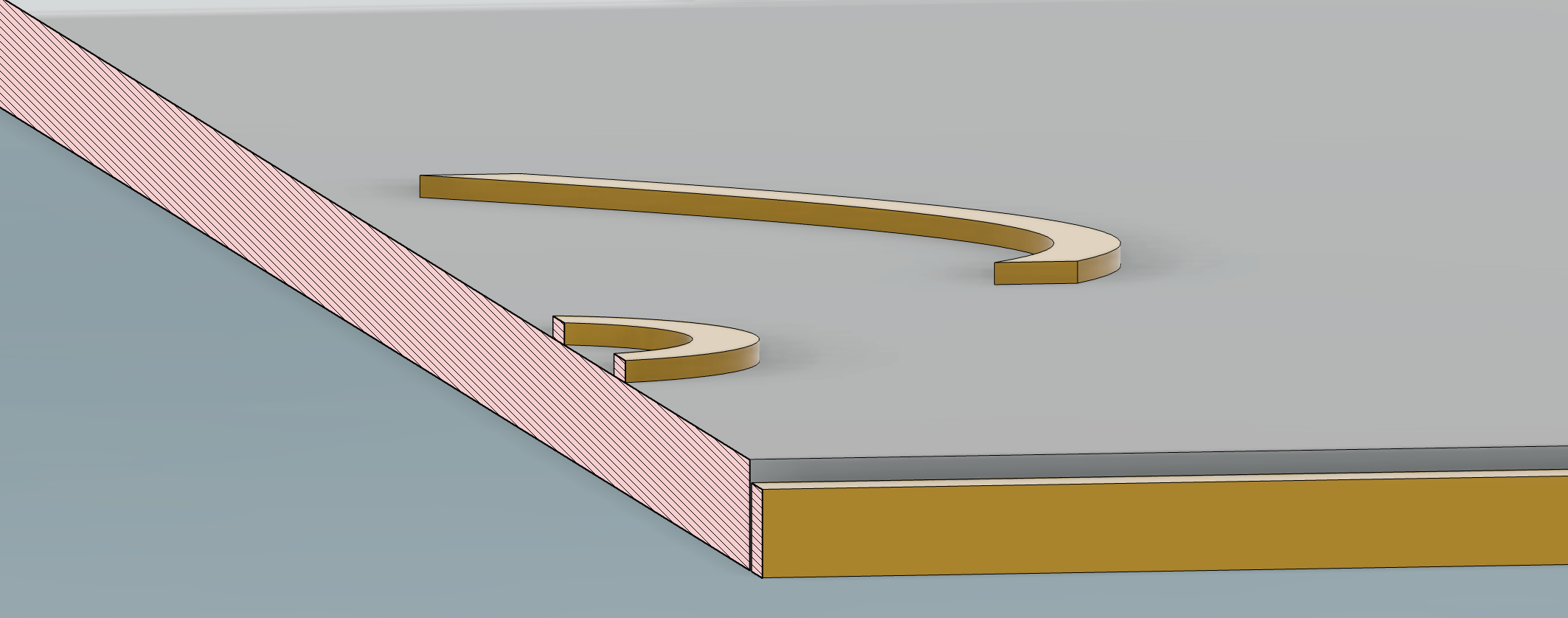
Placing the panel in
We are going to need a pause (or color change) right where the raised part of the fence starts.

So we're building a fence, pause, place the acrylic panel inside the fence as best we can, then resume the print and force ourselves not to worry. Everything will be alright. In fact, worst case scenario is that we print too far above the panel and it doesn't stick, which probably means we should check the model or the calibration of the printer. If it's a bit under, the hot nozzle will make way for itself by melting through the acrylic - also a plastic (just like it does all the time when it botched the layer below).
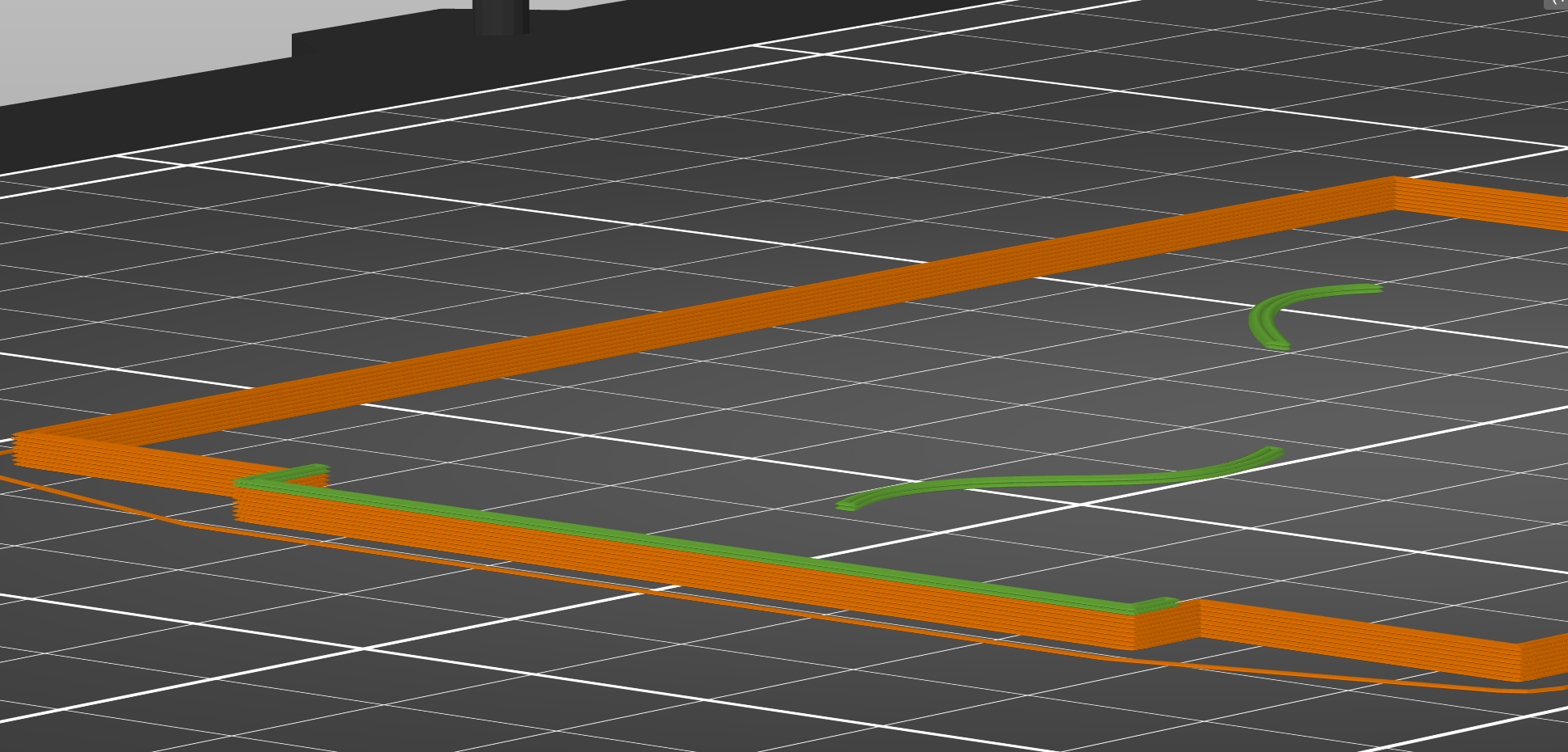
Ignore the well intentioned warnings of the slicer. Yes, I have layers in mid air. So what? I put them where I want to.
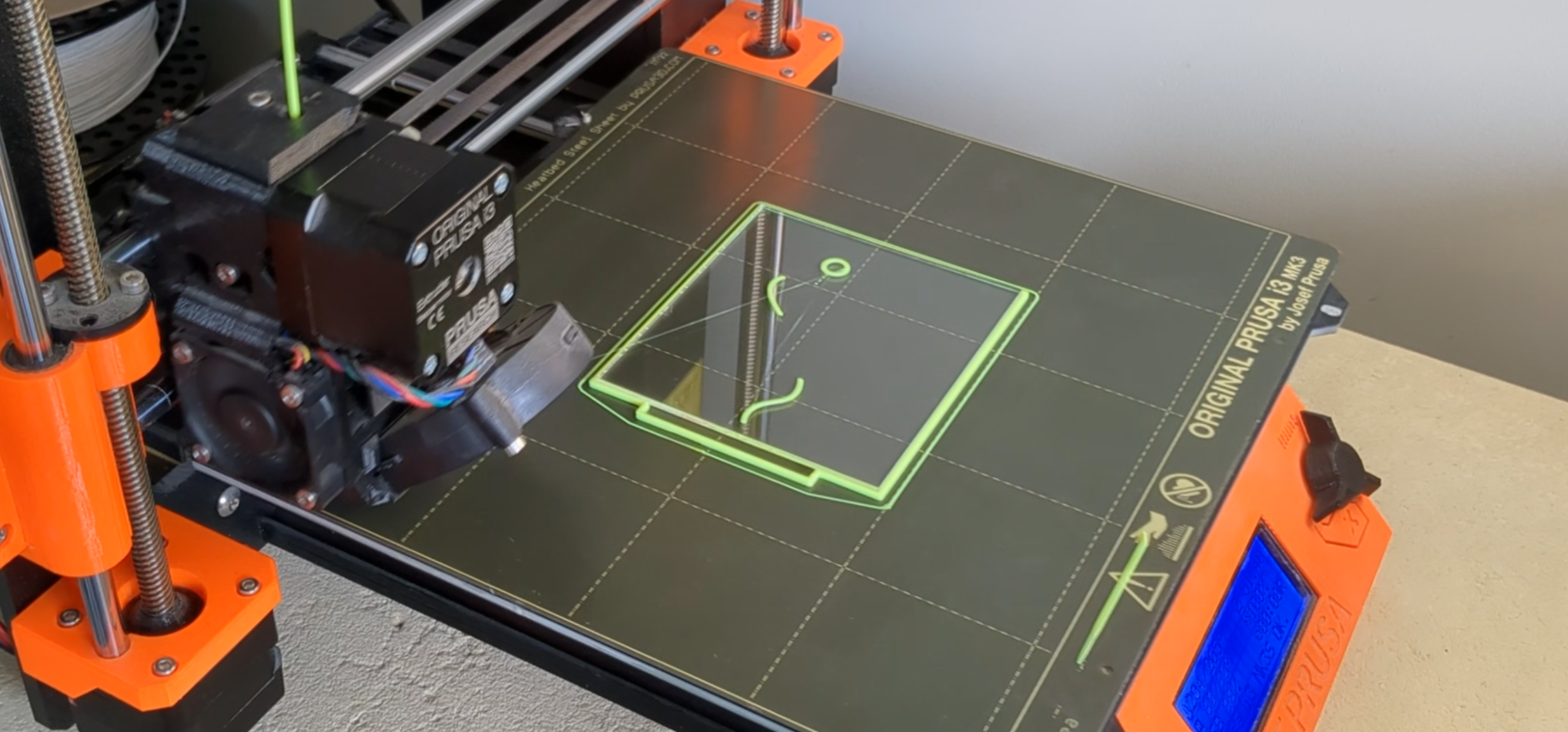
Alternatives
But the acrylic panel doesn't have to necessarily be placed on the bed. You can design a place for it anywhere in the model (as long as it sits in a plane parallel to the bed) and lock it in by printing on top of it. Here's an example where I trapped some small pieces inside a maze shaped box with a transparent window as a toy for my baby.

Strength
How strong is the bond? At least as strong as the adhesion between the other layers of the 3D print. On my tests, some other layer always gave up before the contact surface between the Acrylic and the PLA. It's only when I bend the acrylic part away from the printed part that I'm able to undo that bond, but even then there will be filament residue on the acrylic, a sign that the filament was still the weak part.
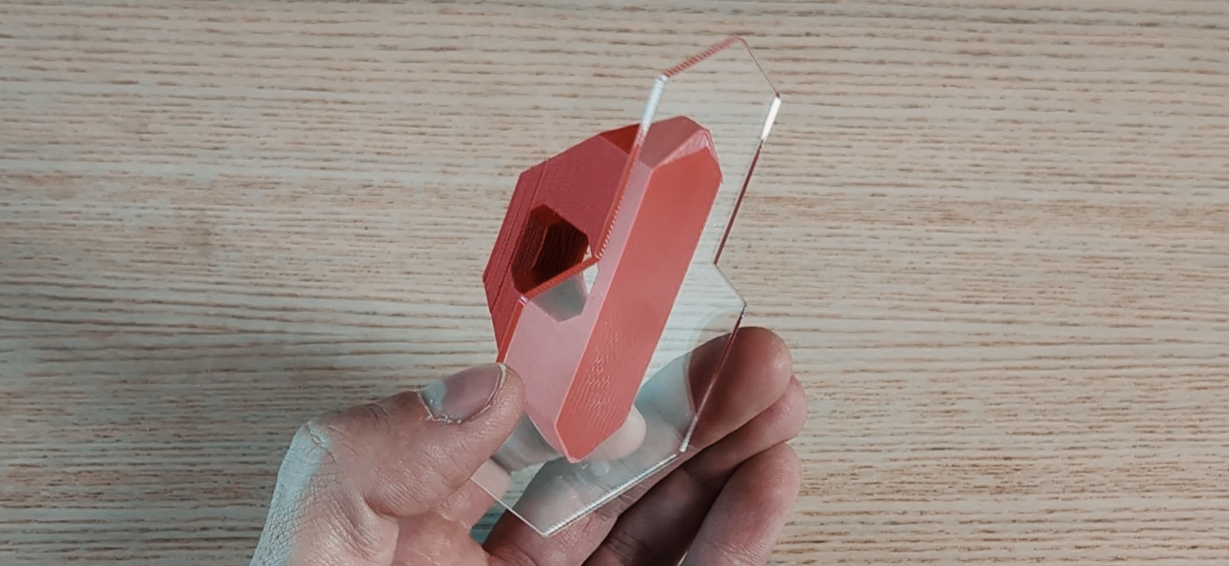
None of this is very scientific or exhaustive (I could try other types of filament, solid infill which I didn't try yet). But it's more than enough for me to trust it as an asset and not a potential liability.

Check out more in the video walkthrough at the top of the article!
 Julius Curt
Julius Curt